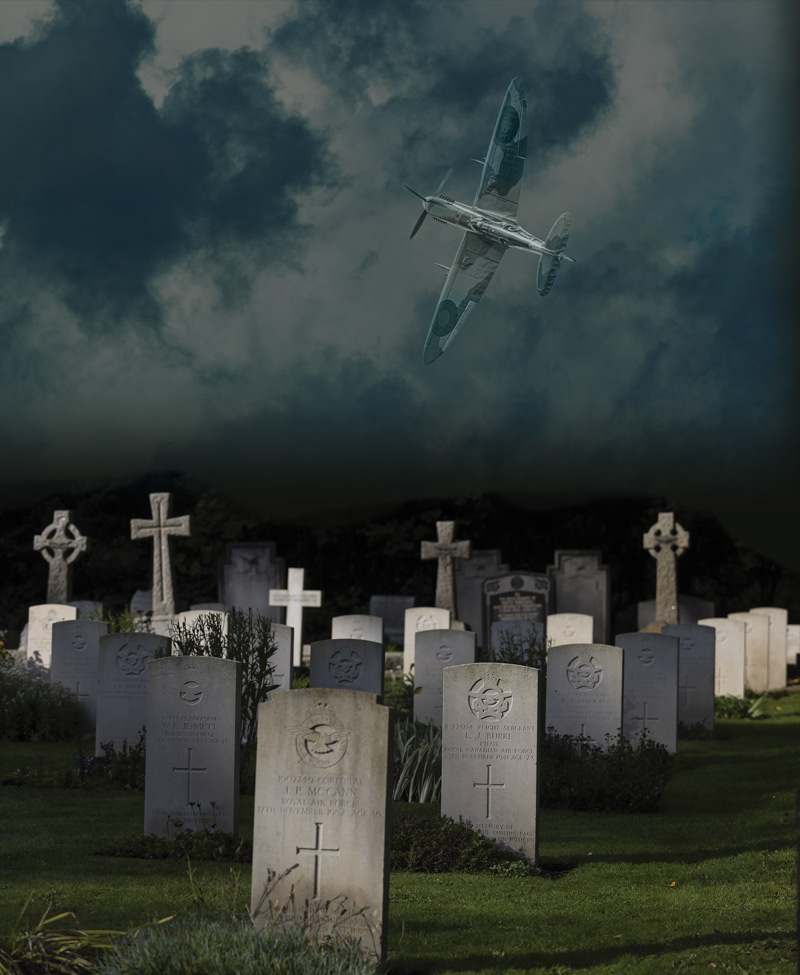
Thirty-eight WW II pilots and ground crew lie is the Whyteleafe churchyard in Kenley, including Canadian Spitfire pilot Leonard Burke.[Stephen J. Thorne/LM]
It’s Aug. 15, 1940. The Battle of Britain has been raging in the skies over the English Channel and the home islands for more than a month, the criss-crossing contrails of Spitfires and Hurricanes, Bf 109s and 110s weaving chaos high above.
Hermann Göring’s Luftwaffe is trying to neutralize a desperate Royal Air Force and its Allies before Adolf Hitler launches a Channel-borne invasion of the last bastion of democracy in Europe. The continent has fallen, and German fighters and bombers have taken up residence at airfields all over occupied France.
Already a veteran of the Battle of France, 19-year-old Corporal Frederick Victor (Vic) Bashford of Portsmouth, England, is an aircraft electrician with 615 Squadron, a local auxiliary unit stationed at Royal Air Force Kenley.
The First World War airfield is perched on a hilltop, on the fringes of London in the verdant county of Surrey, England. It overlooks the hamlet of Kenley and neighbouring Croydon to the north and the village of Whyteleafe in the south.
The site’s Canadian connections date to its earliest days in the summer of 1917, when the Canadian Forestry Corps felled trees and cleared land on Kenley Common after it was requisitioned under the Defence of the Realm Act of 1914.
Now, with another world war upon them, Bashford and the pilots and maintainers of 615 have been a busy lot. Kenley is at the front line of one of the great battles in British history, among three airfields along with Croydon and Redhill that will form 11 Group, Sector B. The region will bear the brunt of the German onslaught.
The airfield at Middle Wallop, 120 kilometres west, was hit hard the previous day. Two 615 pilots, Peter Collard and Cecil Robert Montgomery, are among the dead.
On this day, Squadron Leader Ernest A. (PeeWee) McNab of 1 Squadron, Royal Canadian Air Force, is flying with an RAF unit on his first combat mission and shoots down a Dornier bomber over the Thames estuary.
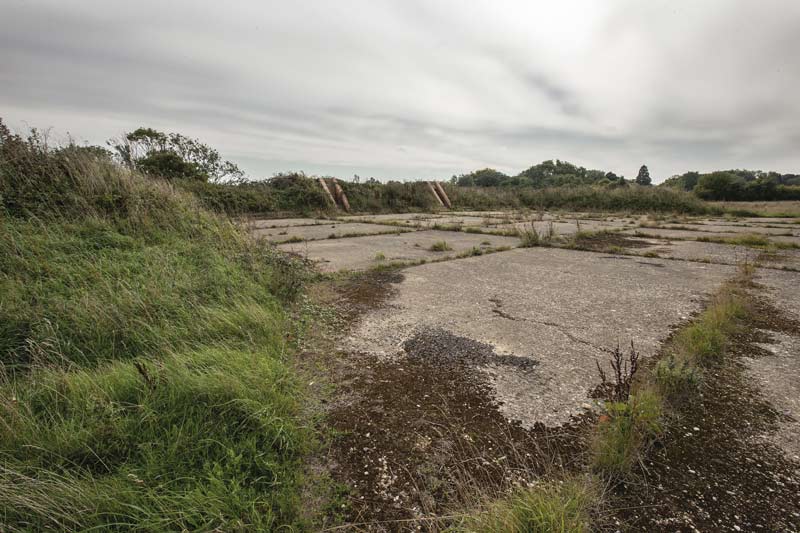
Blast pens are among the remnants of the once-critical air force base.[Stephen J. Thorne/LM]
Hundreds of German aircraft have been attacking airfields and radar stations throughout the exhausting day—Hawkinge, Lympne and Manston; Rochester, Eastchurch and Worthy Down; Rye, Dover and Foreness.
Out over the English Channel, the air fighting is furious and, in many cases, the Allied pilots are vastly outnumbered.
It’s sometime around 6 p.m. when Bashford wanders over to Whyteleafe Bank, the bluffs overlooking the village in the valley below. In the distance, he hears the faint buzz of airplanes approaching from the south.
As the hum gradually approaches a roar, Bashford strains to see whether the aircraft are friends or foes. He counts 15. He notes that they’re twin-engine planes, perhaps friendly Bristol Blenheims. But then he makes out the long canopies, the tapered, shark-toothed noses and engine cowlings, and—the dead giveaway—the twin stabilizers on the tails.
It’s clear they’re not friendly. They’re heavily armed, bomb-laden German Bf 110s, fighter-bombers known as Zerstörer (destroyers) coming up the valley low and fast.
Kenley is at the front line of one of the great battles in British history.

Faded markings and cracks sprouting grass dot the base’s aged runway.[[Stephen J. Thorne/LM]]
From his vantage point on the bluffs, Bashford is soon looking down on the squadron as it passes, the black crosses on the wings and fuselages, the swastikas on the stabilizers clear just metres away. He can see the faces of the two-man crews, the pilots peering forward, the rear-facing gunners positioned mid-fuselage.
They belong to Gruppenstab/Erprobungsgruppe (test wing) 210, based in Marck, near Calais, France, a few short kilometres from the narrowest point of the Channel. It will be their leader’s final mission.
They bypass Kenley—indeed, they may not even realize it’s there, flying as they are below the ridgeline—and continue seven kilometres north to Croydon, home to the lone RCAF squadron in Britain at the time. As it happens, 1 Squadron is away training, minus its two senior officers, temporarily seconded to the RAF.
Some historians will later argue that Kenley was the intended target that day, mistakenly missed as the Germans instead rained devastation on the Croydon airfield and its surrounding London suburb. Regardless, both sides pay a heavy price. Hurricanes from Croydon and nearby Biggin Hill bring down most of the Germans, including the unit commander Hauptmann Walter Rubensdörffer and his gunner.
Some of the attacking aircraft crash into the heavily populated suburbs around Croydon and Purley. The Bourjois perfume factory takes a direct hit; 60 people die and more than 180 are injured. The Aug. 15 raid is the first to hit Greater London, causing waves of grief and anger.
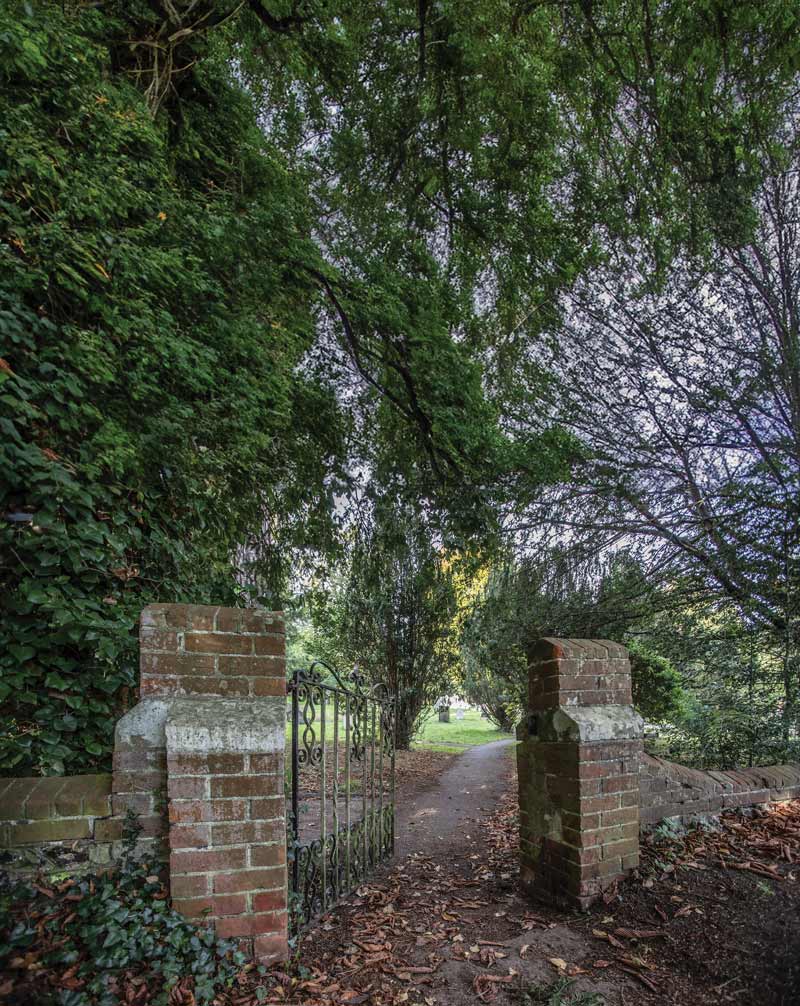
Many of the WW II personnel would undoubtedly have passed through the gate to the local cemetery en route to the airfield.[[Stephen J. Thorne/LM]]
The hilltop airfield at Kenley is targeted three days later in what is supposed to be a staged attack led by a dozen Junkers 88s, followed by 27 Dornier 17s, then nine low-flying Dorniers of the Luftwaffe’s 9th Staffel out of Cormeilles-en-Vexin in northern France.
Poor weather, however, plays havoc with the complex operation, delaying some aircraft and hampering their form-up near Calais.
The Dorniers of the 1st and 3rd Gruppen are six minutes late, but overtake the Junkers of the 2nd Gruppe anyway. This has ominous consequences for the low-flying 9th Staffel, which arrives at Kenley first and finds the airfield disconcertingly intact and ready for a fight.
Bashford, who had been conducting routine aircraft inspections that morning, first sees three Dorniers barely clear the top of the hangars. He watches as the four-inch anti-aircraft gun, some 50 metres away, opens fire. It’s about 1:15 p.m., and he’s sprinting for the air-raid shelter in the back of a blast pen.
Led by Hauptmann Joachim Roth, the planes are coming in at 30 metres—so low that the station armourer, Warrant Officer Edward George Alford, can clearly see their crews and fires two futile rounds from his service revolver.
Four of the German aircraft are nevertheless destroyed by ground fire and fighters; the rest are all damaged. But their handiwork is devastating to Kenley. And there’s more to come.
“After the low level attack had passed over, I went up on to the roof of the Armoury and found that no one was hurt but one of the armourers had burnt his hand through catching hold of the barrel of the G.O. Gun to recock it to remedy a stoppage due to a misfire,” Alford writes later. “I told him to report to the Sick Bay, but a glance in that direction told me that no such place existed.”
The onslaught resumes minutes later as the main group of 27 Dorniers begins high-altitude bombing. More than 150 explosives miss the airfield and wreak death and destruction on the surrounding area, hitting railway lines and damaging roadways. Houses in Whyteleafe and Caterham are destroyed or badly damaged.
By the time the last flight of Junkers 88 dive bombers arrive, Kenley airfield is a smoking ruin. The last wave of Germans head for their alternative target, 25 kilometres away at West Malling.
Bashford emerges from the shelter to find the hangars burning, their contents destroyed. The man who had driven the ground crew back from lunch, believed to be Leading Aircraftman Thomas Holroyd from Liverpool, is slumped behind the wheel of his lorry, killed instantly by a Dornier’s bullet that had entered through the open passenger-side window and hit him in the face. The lorry itself is undamaged.
Five new Hurricanes, still awaiting their squadron markings, sit riddled with bullets and shrapnel outside the hangars.
One Kenley pilot is killed in the air, another on the ground, along with nine aircraftmen and two soldiers.
Throughout the day, the Luftwaffe targets airfields at nearby Biggin Hill, Hornchurch, North Weald, Gosport, Ford and Thorney Island, along with the radar station at Poling.
German losses are tallied at 69-71 aircraft destroyed, 31 damaged, 94 crew killed and 40 captured. The Allies lose 27-34 fighters in the air and 29 on the ground; 62 aircraft are damaged; 10 pilots are killed.
Aug. 18, 1940, comes to be known to both sides as The Hardest Day.
Croydon and Kenley will rebuild. Kenley, in fact, is dispatching fighters the next day after the craters are filled in and Alford earns a George Medal cleaning up the 150 unexploded bombs that litter the airfield. Kenley—indeed, the whole area—is critical to Britain’s defence.
Over the next two months, the Battle of Britain tapers off. By the following spring, Hitler has turned his attention eastward to the Russian steppe, the air war has shifted to the continent and the Allied bombing campaign is escalating. The airfields of southern England, especially, become home to dozens of Commonwealth and other Allied fighter squadrons, including Canadian. During the war, eight RCAF units take up residence at Kenley alone, along with British, Australian, Kiwi, Polish, Czech, Belgian and American.
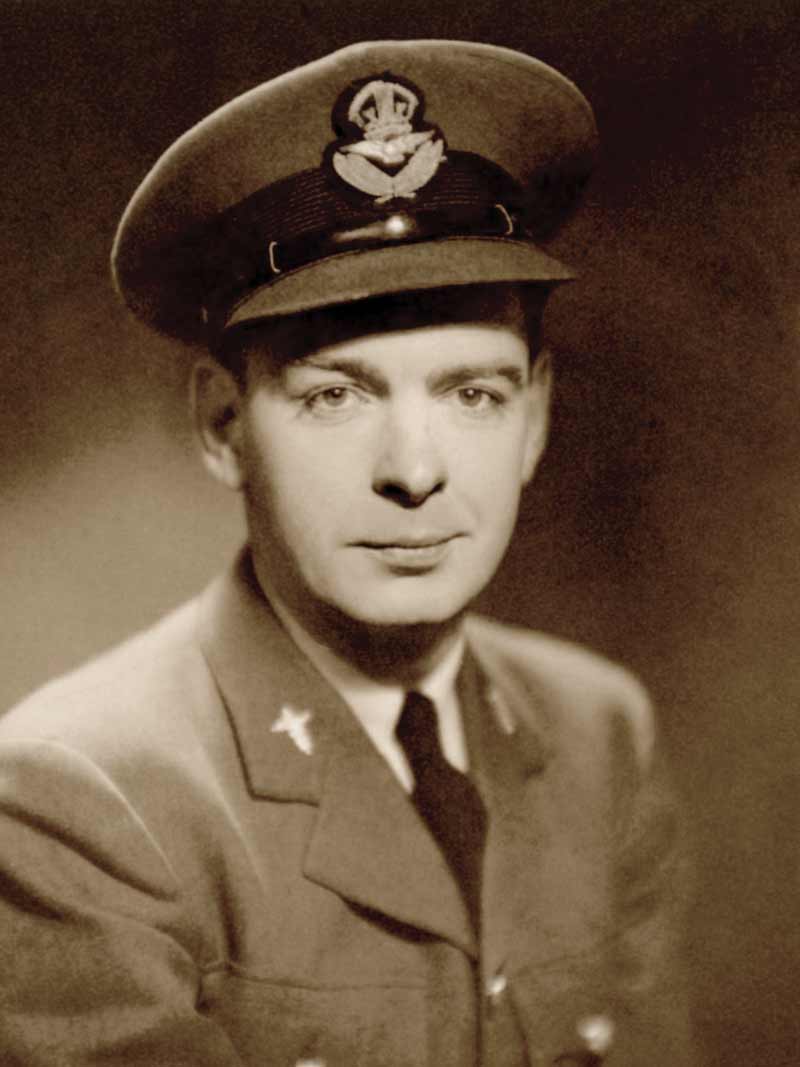
Flight-Lieuntenant Edward L. (Ted) Thorne was a medical officer in the wartime RCAF.[Thorne family archive.]

Like many, Flight Lieutenant Edward L. Thorne arrived at Kenley to the local train station.[Stephen J. Thorne/LM]
Beginning in the summer of 1942, my father, an RCAF medical officer, was posted with 401 or 416 squadrons at Kenley, Redhill and Biggin Hill, all within a 20-kilometre radius—20 minutes, more or less, by train from London’s Victoria Station. In all, he spent 31 months overseas with fighter, maritime and bomber squadrons in England, Scotland and Northern Ireland, tending to airmen of multiple nationalities. He was even summoned to care for a member of the extended Royal Family while serving with Bomber Command at Topcliffe, England, in 1944.
Like so many before and after him, Flight Lieutenant Edward L. Thorne likely arrived at Whyteleafe Station and humped his duffel along the winding laneway up Whyteleafe Hill toward RAF Kenley. Perhaps, as some did, he took a short detour along Church Road to the Whyteleafe (St. Luke) Churchyard, with its “Airmen’s Corner,” in which 38 WW II dead are now buried.
“If I had a penny for every person who has come up to me and proudly
said that their house had Canadians billeted there, I’d be a rich woman.”
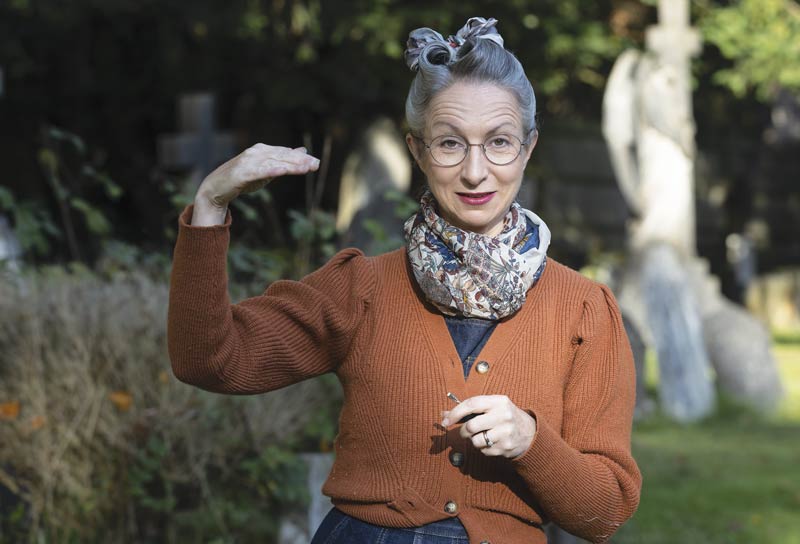
Amateur historian Linda Duffield speaks the international sign language of flight.[Stephen J. Thorne/LM]
A Canadian motorcycle driver and two pilots lie there: Sergeant Leslie Burk of Lindsay, Ont., Flight Sergeant Leonard Joseph Burke of Tignish, P.E.I., and Sergeant Ross Alexander MacKay of Vancouver. Many more died flying out of Kenley, their remains buried in far-flung parts of the British Isles, France, Belgium, the Netherlands and Germany. Others were lost and never found.
Kenley boasted some of the great British and Commonwealth pilots, including the legless British ace Douglas Bader, Canadian aces George (Buzz) Beurling, Hugh Godefroy and Lloyd (the Angel) Chadburn, along with the RCAF’s first Black-Canadian commissioned officer and fighter pilot, 401’s Junius Hokan of St. Catharines, Ont., who died in September 1942.
Then there was the leading Allied ace in Europe, Briton Johnnie Johnson, who amassed 34 aerial victories along with seven shared, three shared probables, 10 damaged, three shared damaged and one destroyed on the ground. His victims were all German fighters—14 Bf 109s and 20 Focke-Wulf Fw 190s, the most kills of the vaunted German aircraft credited to a single pilot.
But Johnson, who shot down a 190 and shared in the destruction of a 109 over the Dieppe beaches during the ill-fated amphibious raid of August 1942, will forever be remembered for his time commanding Canadians at Kenley, where he was given the call sign “Greycap” and, as was the custom with wing commanders, had his initials, JEJ, painted on the side of his Spitfire IX.
He took charge of the Kenley Spitfire wing, which included Canadian squadrons 403 and 421, in early 1943. By September, his tally was 21 and his Canadian Kenley wing, now known as the Wolfpack, had accounted for 60 more victories. Johnson would lead Canadians again later in the war.
By the time my father arrived, the area was “swarming with Canadians,” says Linda Duffield, a theatrical costume designer by trade and an amateur historian with a passion for local wartime research. The RCAF posted 47 squadrons overseas during the war.
“They were at Biggin Hill and there were Canadian army units at Caterham barracks and loads of other units camped out in the woods, etc.,” says Duffield.
“If I had a penny for every person who has come up to me and proudly said that their house had Canadians billeted there, I’d be a rich woman. The truth is that many of the houses were vacant because the civilians were recommended to evacuate if they lived within a certain radius of the airfield.
“So, there were loads of empty houses and they were out to use when they dispersed the personnel off the base.”
Gliders now fly out of Kenley. It’s a serene, peaceful place, even though the remnants of its wartime role are still evident.
I met Duffield on social media. She was running a Facebook page on behalf of the Kenley Revival Project, a lottery-funded effort to “preserve and protect” what it describes as the war’s most intact fighter airfield. Now she’s my guide as I complete a pilgrimage to the place where my father was posted with Chadburn and Godefroy. Duffield’s the daughter and the niece of RAF servicemen; her mother was a Wren, Women’s Royal Naval Service. They were all aviation buffs.
“I became fascinated with Kenley because it has this quietly expectant atmosphere,” she says in her distinctly English lilt. “The gliders feel like the sighing ghosts of all those Spitfires and Hurricanes. Sometimes it feels like the place itself has never given up the hope that the fighter boys will return home one day.
“For me that’s more powerful than any museum and it’s what made me want to find out who those men and women were and what they went through.”
Before ascending the hill to RAF Kenley, we visit the railway stop—a simple station building and platform—and the churchyard cemetery, where the morning light casts long shadows and illuminates the pale tombstones in a golden glow.
The airfield itself is set back from the road, through a steel gate and up a driveway lined with brick buildings. If not for the signage, one might not realize an airfield is there at all.
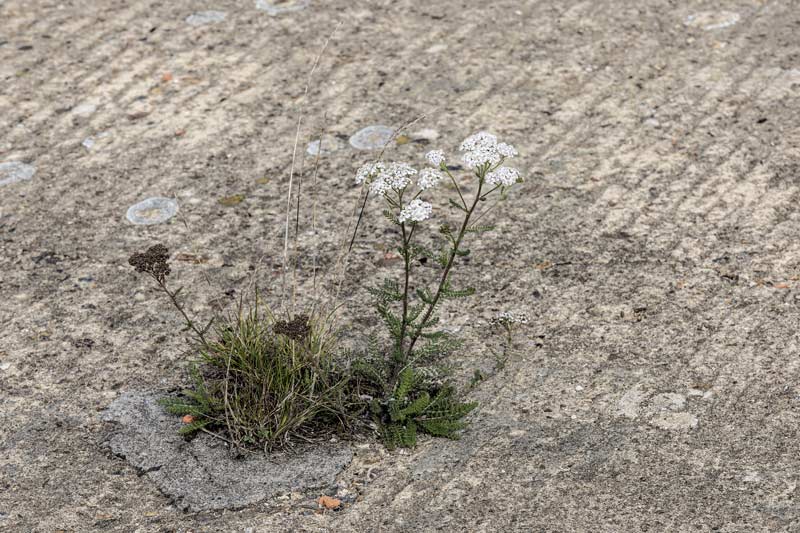
Vegetation pushes through the cracks on the tarmac at Kenley.[Stephen J. Thorne/LM]
Walking the aged runways, their markings faded and cracks sprouting grasses and flowers, it’s not hard to envision the Kenley of the 1940s and a blue-uniformed Flight Lieutenant Thorne—“Doc Thorn” in Arthur Bishop’s book Winged Combat—going about his duties as squadron medical officer.
The concrete blast pens, built last-minute to varying criteria and sizes in early 1940, remain in place around the perimeter of the field. At least one of their walls is pitted with what looks suspiciously like machine-gun fire. There are gun emplacements made from sewer pipes.
Duffield takes me inside a spider-infested air-raid shelter at the back of one blast pen. It’s dry inside, and there’s still graffiti and art on the walls.
It was all “built in a hurry, but done well,” says Duffield. “The blast pens and surviving gun emplacements, etc., at Kenley tell this story of ingenuity in desperate times. They just had to do their best with what they had. That attitude of ‘what have we got and how can we use it to best effect’ made a deep impression on me.”
As Duffield points to the spot where Bashford stood on that late-summer evening in 1940, the image she describes emerges vivid in my mind. I can almost see and hear the German aircraft passing.
After a lifetime reflecting on my late father’s stories, of pouring through his wartime photo album, exploring books and watching and rewatching the ITV series “Piece of Cake” (my dad, whose RCAF may have been modelled on the RAF, but apparently wasn’t beset by the rivalries and class consciousness depicted in the show, disliked it intensely), it feels as if Britain’s war has come alive around me.
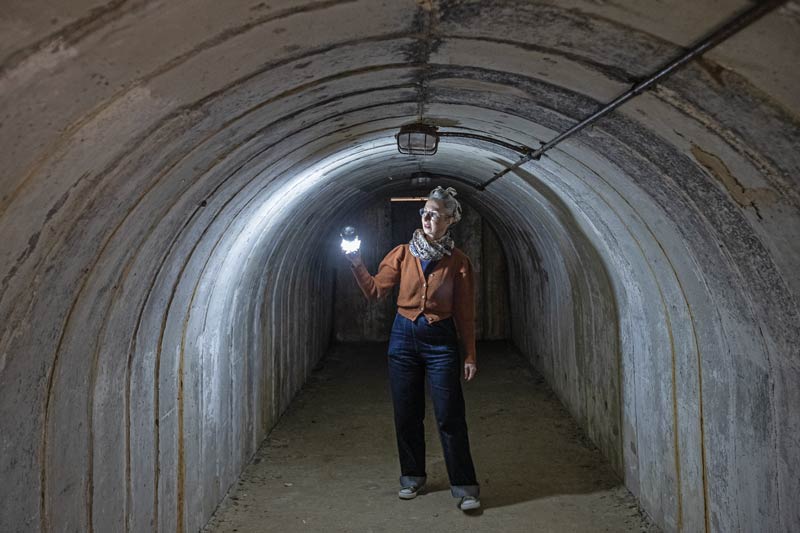
Duffield leads the way in one of the base’s air-raid shelters.[Stephen J. Thorne/LM]
Indeed, like the historical novelist Patrick O’Brian, author of the Master and Commander books about Horatio Nelson’s 18th-century navy, the youthful Duffield knows the place and time so well, one can’t help but feel as though she had been there eight decades ago herself. The stories just flow, like she’s been transported to today by time machine.
The officers’ mess, still missing one of its original bay windows lost during the Aug. 18 raid, stands to one side of the airfield, fenced off, but still relatively intact. It’s slated for development as luxury housing, its facade to be maintained by law.
The stories just flow, like she’s been transported to today by time machine.
The squash court, the officers’ domain, is nestled alongside a gun emplacement, a trench still evident among the vegetation. Inside, the court itself has long since been commandeered for storage. A pilot’s footlocker sits among paintings and boxes, his name stenciled on the lid.
The RAF Association Portcullis Club, a modest museum/bar, occupies the oldest building still standing at the site. It dates to 1917, when Kenley was No. 7 Aircraft Acceptance Park, bringing in aircraft parts by rail and truck from area factories, such as Sopwith in Kingston, 20 kilometres away.
Planes were assembled here, instruments calibrated, guns tested and the final products test-flown before they were ferried out to squadrons on the Western Front.
The Portcullis Club building itself, about half its original size since a second runway was built in 1939, first housed an experimental photographic unit staffed by about 60 personnel. They flew their own aircraft, developing specialized cameras and lenses for aerial reconnaissance.
The building became the electrical stores during the Second World War, and later was used as the families club for station and service personnel billeted at Kenley while filling administrative posts in central London. It eventually became the local RAF Association branch. “Although there are very few veterans amongst the membership now,” says Duffield, “the area has such a long, and proud, military history that links to the RAFA have been maintained.
“You find a lot of families in the area who settled here after some ancestor served at RAF Kenley or the Guards Depot in Caterham.”
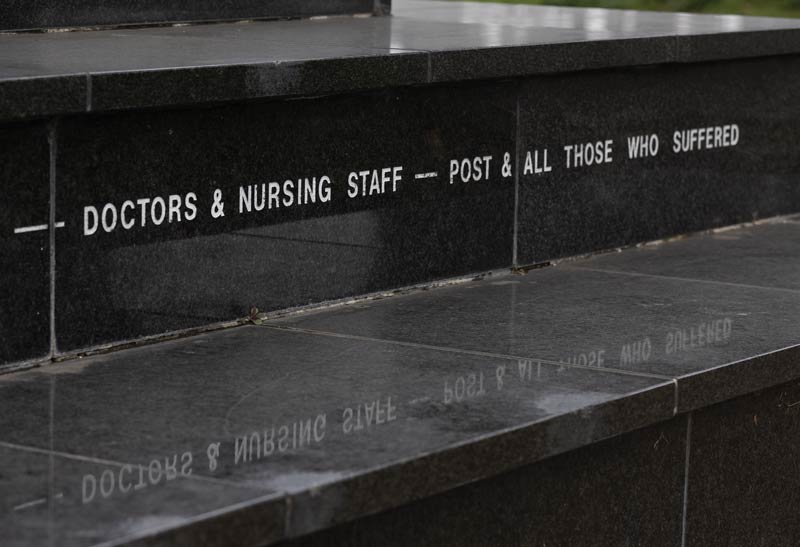
A memorial to local wartime medical staff in nearby Croydon.[Stephen J. Thorne/LM]
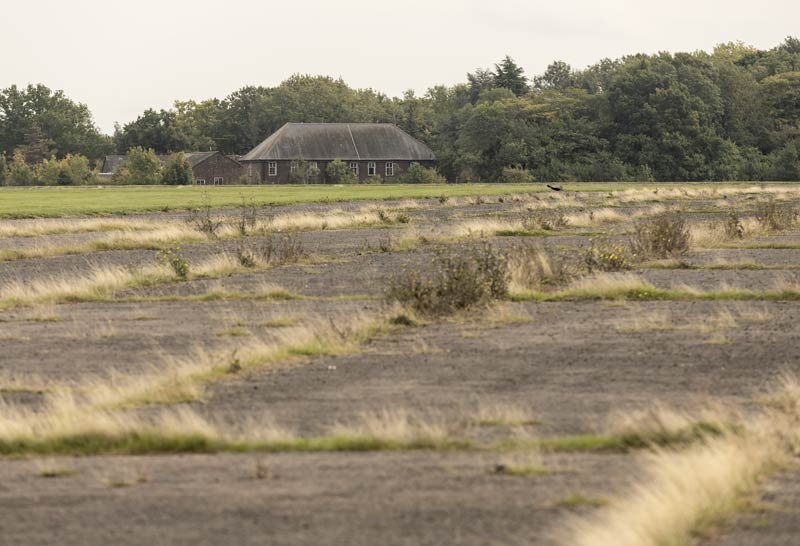
The officers’ mess still stands off one of the overgrown runways of Kenley.[Stephen J. Thorne/LM]
Bashford, the electrician who watched the 110s fly up the valley and survived the attack on Kenley three days later, would go on to accompany 39 Hurricanes to the Soviet Union in August 1941. They were the first of nearly 3,000 destined for the Soviet defence of Murmansk, transported by aircraft carrier in the initial Arctic convoy delivering materiel to the Russian seaport.
Bashford was later posted to the Middle East, and served in Egypt, Palestine, Iraq and Greece before he was demobilized in January 1946. He died in 2023, aged 102.
Among my father’s Kenley contemporaries, the Canadian ace Chadburn was killed in a mid-air collision with another Spit over France one week after D-Day. Hugh Godefroy succeeded Johnnie Johnson as 127 Wing commander and survived the war to study medicine, graduating from McGill University in Montreal. In 1983, he published his memoir, Lucky 13, a vivid account of life at RAF Kenley. He died in 2002, aged 82.
Johnson served in the RAF for another 20 years after the war, then created a housing trust and a foundation for disabled charities in Douglas Bader’s name. He later collaborated with aviation artist Robert Taylor on some of the painter’s most celebrated works. Johnnie Johnson died in 2001 at 85.
Kenley, Redhill and Biggin Hill were part of the Thorne family lexicon until my father died in 2003, aged 90.
Advertisement





















